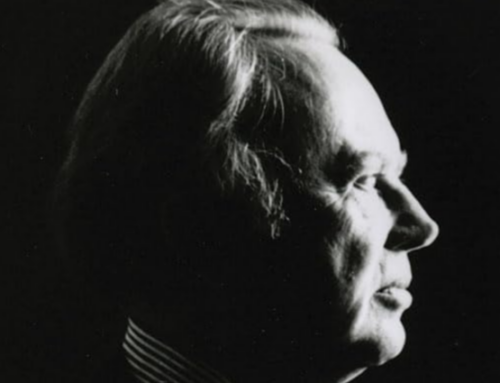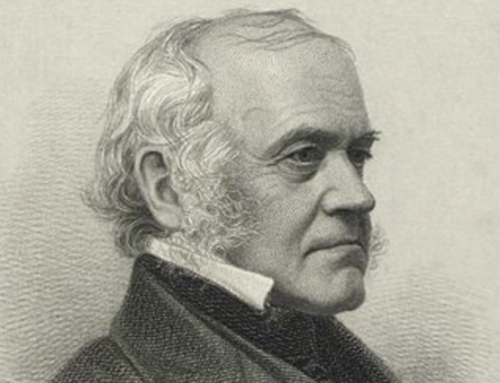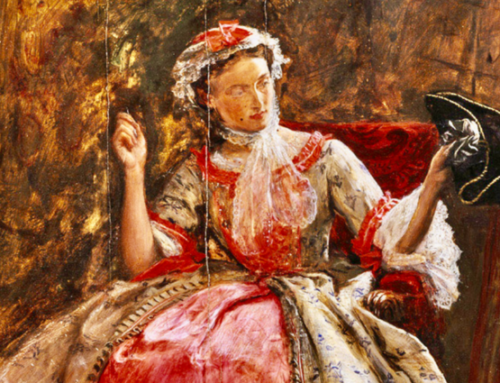Despite all the unfounded fear on the left and all the equally unfounded euphoria on the right, there will be no wholesale revamping by the Supreme Court of the liberal social order that is now deeply rooted in our culture and among our people. The conservative justices’ ethos of evolution over revolution will forestall any such outcome.
There is an amusing, somewhat cynical song in that old hit Broadway musical 1776 entitled “Cool, Cool, Considerate Men.” The catchy lyrics are an ironic paean to cold-hearted conservatives: “To the right, ever to the right, never to the Left, forever to the right.… Let our creed be never to exceed regulated speed.” Well, at least for the last 63 years the exact opposite has been true of the Supreme Court. Replace right with left and left with right, and we have a snapshot of the Supreme Court since the era of modern judicial activism began under former Supreme Court Chief Justice Earl Warren in the early Fifties—that is, an extended period of unregulated speed in changing the American political landscape and social order.
Whether one abhors or applauds this 63-year track record of judicial activism, it remains a genuinely remarkable achievement. (And I confess, in some areas, especially free speech, privacy, and racial equality, I have quietly favored the court’s activism despite its sometimes-strained interpretations of the Constitution.) The Court’s success in re-making America in so many ways, over such a relatively short period of time, is staggering especially when one considers the math. The math is thus: from 1954 to 2017, the Republicans held the White House for 35 years and Democrats only 28 years. Far more astounding, during this same time period Democratic presidents appointed only eight Supreme Court justices, while Republican presidents appointed 18 Supreme Court justices, more than twice as many justices as Democrats! And yet, and yet… despite all these Republican-appointed justices, the liberal tide continues, albeit sometimes slowed and narrowed by a conservative tilt on some issues now and then.
How Did We Get Here…
I suspect that there are several reasons why the Court continues to be activist, but the primary reason is that those who attain power have a hard time not wielding it. Americans have become accustomed to being told what to do and even what to believe by those nine unelected wisemen and wisewomen, and those nine wise counselors have become so accustomed to directing affairs of state and society rather than just interpreting the Constitution, that even some conservative justices find themselves irresistibly drawn to activism.
A second reason, perhaps a corollary to the first, has been an intriguing inclination among judges to become more liberal upon reaching the Supreme Court. This is fascinating because it turns on its head the widespread truism that in general as people grow older, they grow more conservative. The truth of this assertion is demonstrated by the fact that almost every Republican president since Eisenhower has been disappointed in at least one of his Supreme Court appointees. This has not been the case with any of the Democratic presidents.
There is a delightful, although probably apocryphal, story that when asked if he had made any mistakes as President, Eisenhower replied, “Yes, two, and they’re both on the Supreme Court.” He was referring to both Earl Warren, the former Chief Justice, and Associate Justice William J. Brennan. Brennan, interestingly, was chosen in part because he was Roman Catholic, and Eisenhower mistakenly assumed that his personal faith would guide him toward more conservative rulings.
Eisenhower’s frustrations with Warren and Brennan were soon experienced by all but one of his Republican successors. Former president Nixon had a pair of his own “mistakes”—Henry Blackmun, who wrote the majority opinion in Roe v. Wade, and Lewis F. Powell, who wrote the majority opinion in California v. Bakke, which twisted the Constitution sufficiently to allow for reverse discrimination in the university selection process. Former president Ford did no better with his sole Supreme Court appointee, John Paul Stevens. While many conservatives would thoughtlessly applaud Stevens’ dissent in Texas v. Johnson, in which the majority (including Justice Antonin Scalia) sensibly held that the burning of the American flag was protected under the First Amendment, most would oppose his support in Wallace v. Jaffree, which ruled unconstitutional a “moment of silence” in public schools, and his dissent in District of Columbia v. Heller, which expanded the Second Amendment right to bear arms. The same fate befell former president Reagan, when his appointee, Sandra Day O’Connor, reaffirmed the constitutionality of reverse discrimination/affirmative action in Grutter v Bollinger, while Anthony Kennedy, another of his appointees, wrote the majority opinion in United States v. Windsor, which endorsed gay marriage. And finally, former president George H. W. Bush appointed David Souter, who joined in the plurality opinion in Planned Parenthood v. Casey, which upheld the essential ruling in Roe v. Wade, albeit narrowing its scope.
…and Where are We Going?
Of all the Republican presidents since 1954, only George W. Bush’s two appointees seem to have evaded—thus far—a fundamental change in perspective. I say “thus far” because there are some indications that Chief Justice John Roberts is now emerging as a balancing force on the Court, siding often with the conservative wing but other times with the liberal wing. His surprising support for the constitutionality of Obamacare strongly suggests that even with the addition of Brett Kavanaugh to the Court, there is unlikely to be a rapid and overwhelming change in direction. This highlights another reason why conservative justices can often appear more liberal once they reach the Supreme Court—their innate conservatism and deeper commitment to the principle of stare decisis will prevent them from causing serious societal or political disruptions. While all lawyers learn a certain respect for precedent, that respect is primarily intellectual, whereas with conservatives, it is a more visceral commitment. That is, being conservative, it will go against their very nature to eagerly tear down the huge edifice of opinions and expectations that have developed over the course of the last 63 years. While the new conservative majority will likely overturn some of the more egregious liberal excesses (such as the decision in Kelo v. City of New London), for the most part the principle of stare decisis will serve as a greater break on conservative activism than it ever did on liberal activism over the last six decades.
Despite all the unfounded fear on the left and all the equally unfounded euphoria on the right, neither the Republic nor the rights that have judicially developed during the post-World War II period are going to unravel. From Miranda and Wainwright to Tinker and Reynolds to Griswold and Roe, there will be no wholesale revamping of the liberal social order that is now deeply rooted in our culture and among our people. The conservative ethos of evolution over revolution will forestall any such outcome.
A Plague on Both Their Houses
Whether the Court finally starts to lean more right after a 63-year hiatus or continues its leftward leanings, is of lesser import than preserving the credibility of the Court itself. This grows more difficult with each passing year and the Kavanaugh debacle risks eroding respect and trust in the Court much further. Listening to the politicians berating Judge Kavanaugh was almost as bad as watching the newest member of the Court appearing petulant and teary-eyed. Is that not the very definition of what some Republicans often term a “snowflake”? I suspect I am not alone in finding not just the Democrats and Republicans, but also the accuser and accused, untrustworthy. She had a “fear of flying” but somehow was able to fly anywhere at any time, except to Washington? And he never, ever, never got so drunk as to not recall what he might have said or done? That they both spoke with such conviction and credibility speaks more to their acting skills than their sincerity. In truth, because of the excessive politicization of the Kavanaugh nomination process, the greater threat to society and the effectiveness of the Supreme Court remains the deepening suspicion on both the left and the right that the Court is not as august, neutral, or legitimate an arbiter as it once seemed. Having neither the “purse nor the sword” as Alexander Hamilton put it, makes it especially crucial for the vast majority of Americans to revere and respect the Court.
The Imaginative Conservative applies the principle of appreciation to the discussion of culture and politics—we approach dialogue with magnanimity rather than with mere civility. Will you help us remain a refreshing oasis in the increasingly contentious arena of modern discourse? Please consider donating now.
The featured image is in the public domain, courtesy of Wikimedia Commons.








Thank you for your clear and measured thoughts on this subject. As a Burkean conservative I agree with most of your conclusions. Virtually all of the columnists I read and most of the people with whom I speak really seem convinced that “the sky is falling!” I ask all to take a deep breath and wait a few months to see what actually happens. I predict, as you seem to……..not much.
Thank you, Susan. I hesitated writing this essay, fearing that any measured critique would be harshly viewed by both sides. I much appreciate your comments.
Scalia’s irrational flag-burning decision invited all kinds of posturing and disturbing- the-peace activities, ignoring the clear difference between speech and action, and refusing to defend that action on the proper ground of protection of private property.
Thanks for offering your views on this very sensitive issue. Most of my siblings and many of my friends would agree with you that Brennan and Scalia were mistaken, but I agree with them. At least since the Tinker case, symbolic speech has been protected speech, and is often far more eloquent than mere words, although I agree that this particular form of symbolic speech–the burning of the flag–is not at all eloquent and is a repugnant act. But I have always found it a sad irony that a symbol of freedom should ever be so sanctified as to prevent free people from burning it. As I once argued to one of my brothers: the only flag worth fighting and dying for is one that can be burnt and desecrated.
How dare Kavanaugh get mad when people falsely accuse him of rape to keep the court leftist!